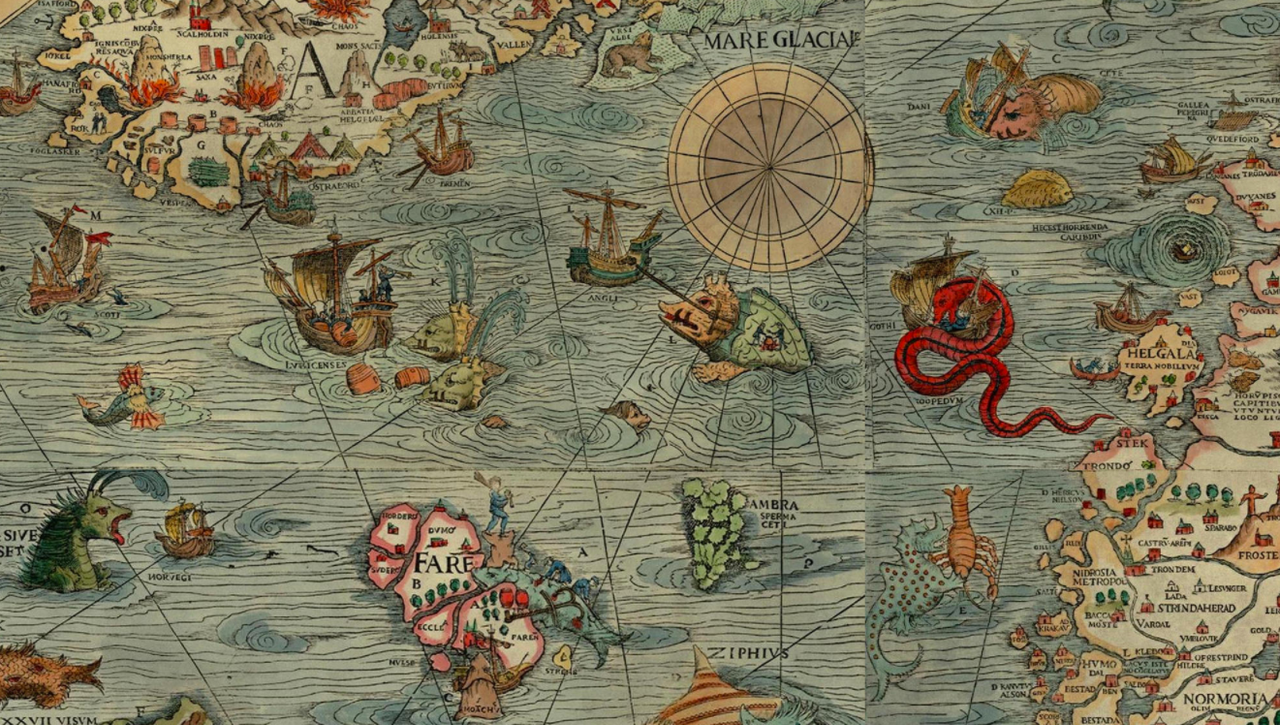Here Be Dragons
Five real places to see the winged legends of medieval Europe.
Since ancient times, across cultures and continents, the concept of dragons—powerful creatures to be both feared and respected—has been a source of utter fascination. This lasting and nearly universal enthrallment with the scaly beasts is a remarkable cultural phenomenon, especially considering dragons are completely made up.
That said, it’s very likely that ancient and medieval people believed dragons were real. Early naturalists and scholars from Europe to China documented the behavior and habitats of dragons, and even classified the creature as one of the scaled animal species. Early paleontologists, too, believed they were digging up old dragon bones.
No one knows for sure precisely where the dragon myth originated. The earliest tales of giant winged serpents may have grown out of exaggerated descriptions of very real beasts such as crocodiles and snakes. They were surely further inspired by (or at least perpetuated by) discoveries of dinosaur fossils and whale bones. In any case, the myth persisted, embellished by retellings and morphed over time by cultural mixing. Dragons eventually became such a powerful and vivid part of civilization as to blur history and mythology.
The “dragon” took on very different shapes, sizes, characteristics, and meaning across time and cultures. In Chinese folklore the snake-like dragons were a symbol of power and luck; in Hindu and Buddhist India they took the form of serpentine deities, sometimes with several heads. In Christian Europe, dragons represented sin and Satan (hence the fire breathing) and were something to be feared. Before a scientific understanding of the world, scaly winged monsters often represented the dangers of the unknown. Old maps never actually warned “Here Be Dragons”—ironically, that itself is a myth repeated often enough to be taken for truth—but medieval cartographers did decorate maps with images of sea monsters and dangerous beasts representing what might be lurking in uncharted territory.
Tales of heroic dragon slayers became the stuff of folklore passed down for generations. In medieval Europe, depictions of dragons showed up on flags, coats of arms, and across the pages of history books. In some cases, the remains of a “real” dragon was preserved and put on display, or otherwise immortalized by statues and sculptures. Some of these you can still visit today. Here are five places to get about as close to a dragon as you’re ever going to be.

The Dragon of Brno
Brno, Czechia
Hanging in the Old Town Hall of the largest Moravian city is the carcass of an actual dragon, or so the originators of the Brno Dragon legend would have you believe.
One of the most famous legends in the city of Brno is that of the dragon that once threatened the local people. But unlike similar myths across Europe, the people of Brno actually have a body to back up their tale. Supposedly the preserved reptile hanging in the town hall is the actual beast that inspired the legend. However, it is the body of a crocodile.

The Bones of the Wawel Dragon
Krakow, Poland
Poland’s Wawel Cathedral holds the remains of a number of Polish royals as well as some of the country’s most famous religious art, but the real attraction is the hanging bundle of bones which are rumored to have belonged to a local dragon.
Hanging next to the cathedral’s entrance are the “real” bones of Smok Waweleski, the local dragon, who before the city was founded was said to live in a cave under one of Wawel’s rolling hills. The bones are chained together in a random jumble, hanging high above the main doors.

The Dragon Rib of Atessa
Atessa, Italy
A preserved “dragon” rib memorializes the legend of the founding of the city of Atessa. The local legend of the village dragon is well known to the people of Atessa, where they preserve a large bone that is said to be a rib from one of the mythical creatures. The large bone is held behind glass in a viewing case that is itself behind iron bars. The long, curved bone is believed by skeptics to be a part of a mammoth skeleton, but this has no more been verified than its belonging to a dragon.

Lindwurmbrunnen
Klagenfurt am Wörthersee, Austria
According to the legend, in the 13th century a dragon was wreaking havoc in Klagenfurt until a brave man caught it like a fish. In 1335, the dragon’s skull (unfortunately in the 1800s zoologists realized it belonged to an Ice Age woolly rhinoceros) was found in a nearby quarry aptly known as Dragon’s Grave.
For decades the skull was proudly displayed in the capital city of Carinthia’s town hall. Later, it was brought to life in a medieval sculpture and fountain still seen today. The woolly rhino’s jawless skull is still on display at the State Museum of Carinthia.

Nibelungenhalle
Königswinter, Germany
Nibelungenhalle, a stone temple decorated with scenes from Richard Wagner’s fantastic opera by the same name, even has its own collection of “dragons.” Both living and sculpted, they recall the famous giant-turned-dragon, Fafnir. The “Dragon’s Den” contains a huge stone dragon protecting its cave, echoing the beast that was killed by the mythic Siegfried. A small reptile zoo was added in 1958, containing 40 terrariums of the exotic lizards that may have inspired the local dragon legend.


































Follow us on Twitter to get the latest on the world's hidden wonders.
Like us on Facebook to get the latest on the world's hidden wonders.
Follow us on Twitter Like us on Facebook